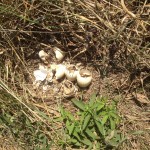Can you explain the importance of balancing the predator and prey populations?
Grant,
I was wondering if you would be kind enough to break down the importance of predator control. I have been trying to do some coyote trapping this winter and it has been tough. My reason for wanting a brief breakdown of the importance is my wife is 100% against me and thinks I am being rude, evil, you name it. She isn’t against me hunting deer, turkey, etc. but does not understand the want or need for catching/killing coyotes. She says it’s rude because I do not plan to eat it and thinks the taking of an animal for fur or population control is not right. She believes “it’s nature’s job and they were here first.” I’m fighting a loosing battle and want some professional insight to break this down in a way she could better understand the importance.
John,
Many folks view predators as harmless or only killing weak or sick prey species. This is most likely based on Disney and other fictional works. It is absolutely not true.
When predator populations increase to levels where prey species can’t reproduce fast enough to replenish themselves or meet overall management goals then the predator populations should be reduced. Current research in multiple states have shown predators (primarily coyotes) killing 70% +- of all newborn fawns. 70%!
Deer populations decline rapidly when fawn recruitment is reduced by 70%.
Researchers place GPS transmitters in a doe’s viginia before the rut. When the fawn is born it pushes the transmitter out and the change in temperature triggers a signal change that alerts researchers to exactly when and where fawns are born. Most fawns are killed by coyotes within the first four hours. Researchers swab the site and use traces of blood and hair to do genetic testing and determine the species, gender, and individual identification of the predator. This is cutting edge research and when first published researchers were shocked at the percentage of fawns killed within four hours of birth by coyotes in some areas. You won’t hear about this on Disney.
I always stress “managing for a balance.” Where predator populations are far below what prey populations can handle I’m for limiting predator harvest or protecting them.
Working for a balance is good conservation. Preservation is rarely good conservation. Currently wolves in northern Minnesota are contributing to a significant reduction of moose in that area. Both wolves and moose are protected. Without intervention from mankind it’s very likely the moose in that area will go extinct within the foreseeable future. What a shame that preservationists will allow their unfounded beliefs to cause a majestic species to go extinct.
Mankind has significantly altered the habitat. Without active management many populations of both predators and prey will be reduced greatly. Active management is very sound conservation.
If your wife refuses to accept facts and views predators based solely on emotions, no amount of data will change her mind.
Enjoy creation,
Grant
January 24, 2016
🔗 Link | ↑ Top






